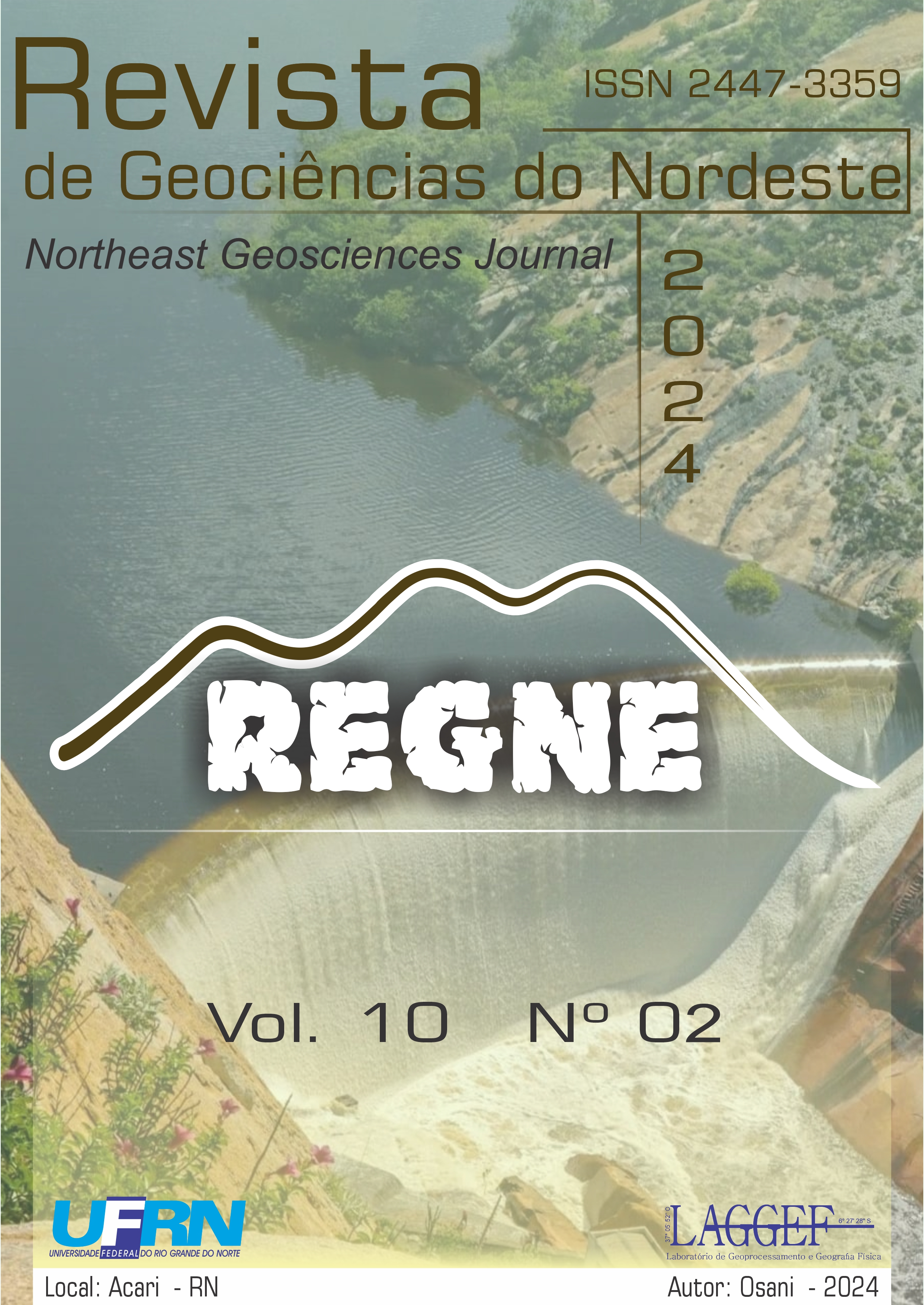Índice de transformação antrópica (ITA) aplicado à bacia hidrográfica do rio Araranguá, Santa Catarina, entre os anos de 1985, 2005 e 2019
Anthropic Transformation Index (ATI) applied to the Araranguá river hydrographic basin, Santa Catarina, between 1985, 2005 and 2019
DOI:
https://doi.org/10.21680/2447-3359.2024v10n2ID33545Abstract
Land cover and land use studies are instruments to aid in territorial planning and management, especially when they allow the representation of landscape dynamics. This study sought to understand and quantify the transformations that took place in the Araranguá River basin, state of Santa Catarina, Brazil, in three different periods (1985, 2005, 2019). The thematic classification was done by the region method, the images used derive from the LANDSAT 5 and 8 satellites, Qgis, ArcGis 10.3 and IDRISI selva software were used. As an aid to understand the anthropic influence on the territory, the Anthropic Transformation Index (ATI) was used as an instrument. The results showed that in 35 years, the period included in this study, the pasture and undergrowth class was the most reduced to the detriment of the growth of agricultural areas (exposed soil type); other classes that showed suppression were mineral extraction areas and areas of dunes and sands. The ATI was generally presented for the basin classified as an area of “regular degradation”.
Downloads
Downloads
Published
How to Cite
Issue
Section
License
Copyright (c) 2024 Notheast Geoscience Journal

This work is licensed under a Creative Commons Attribution 4.0 International License.


 Português (Brasil)
Português (Brasil) English
English







